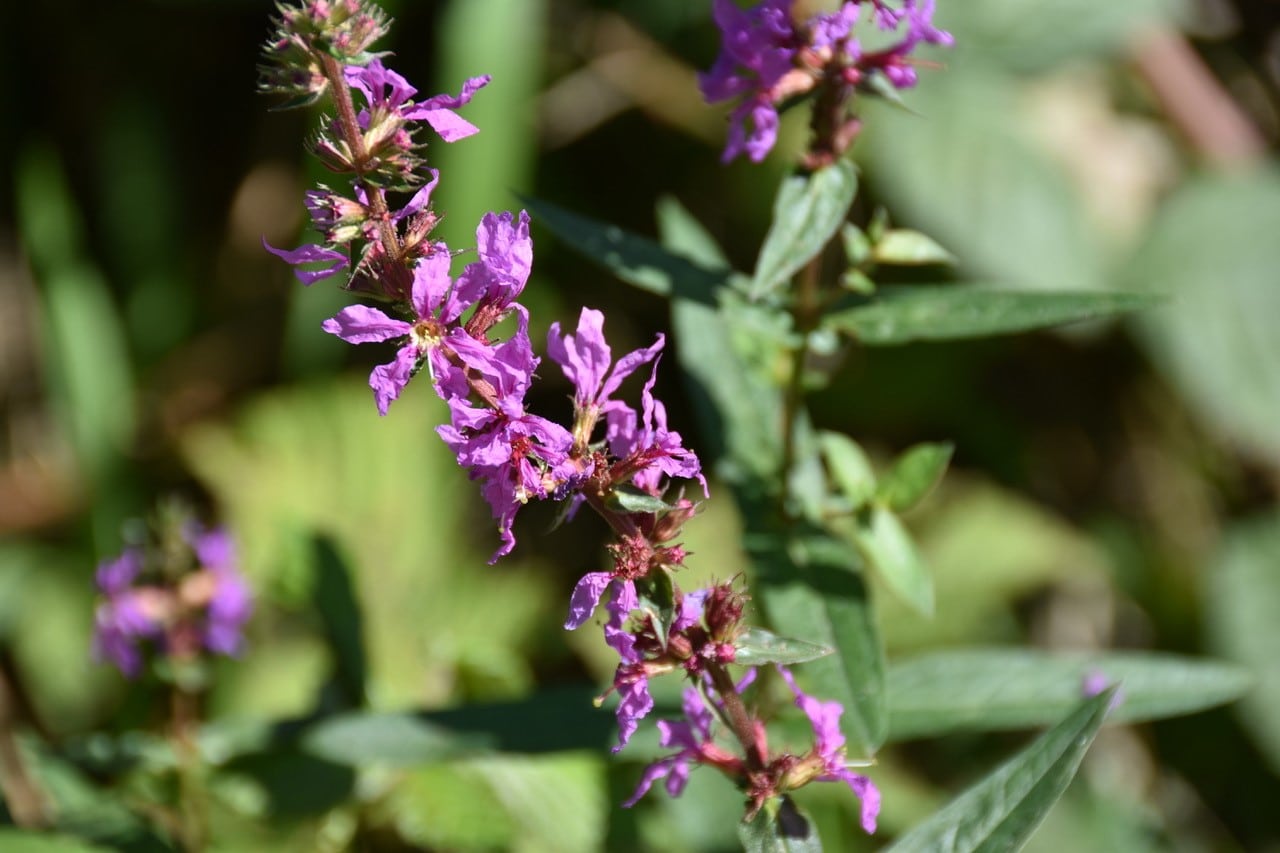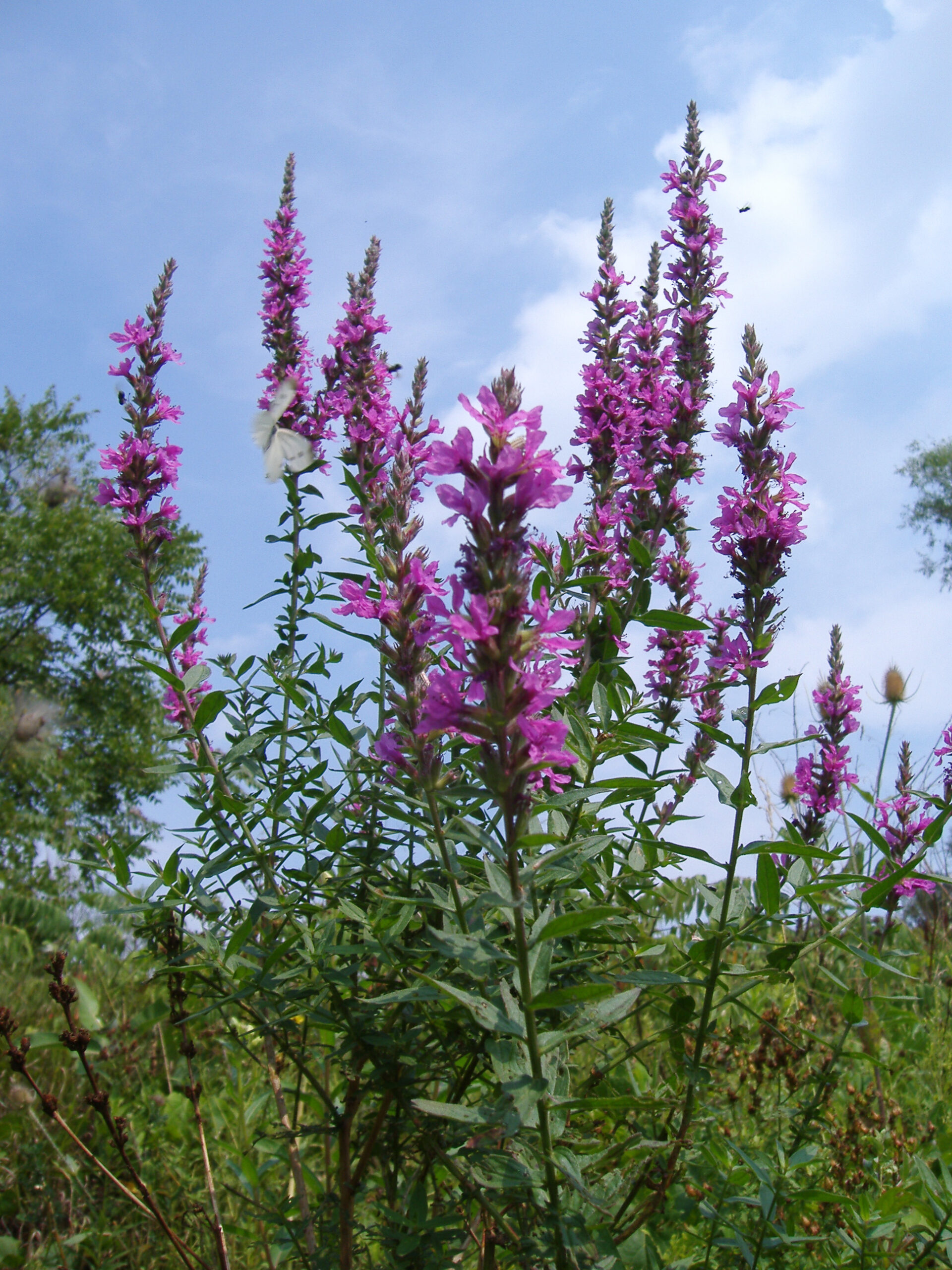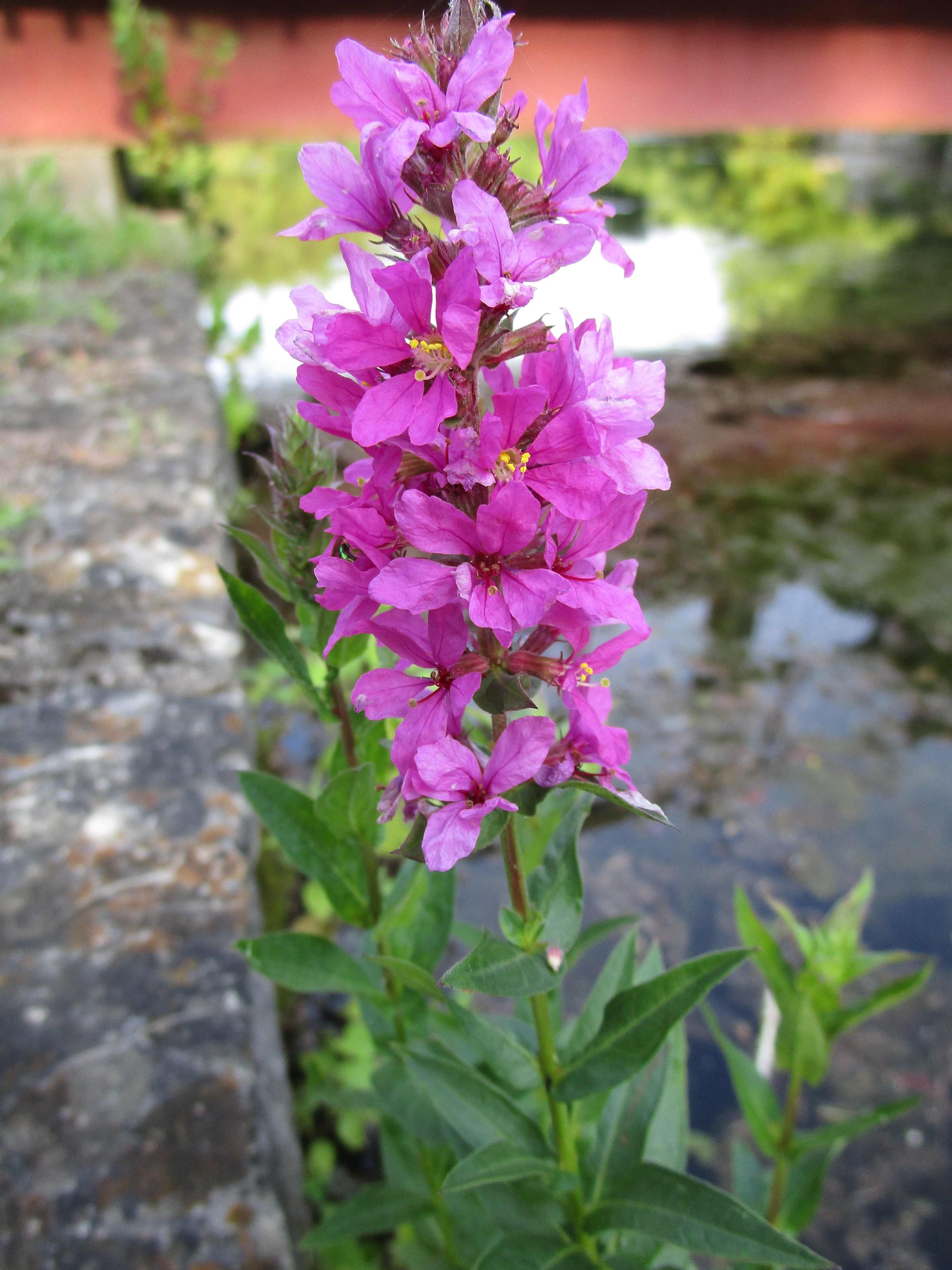

If several larvae inhabit the same root, the plant can be killed. This root damage stunts the plant's growth and ability to create seeds. The larvae emerge from their eggs and immediately burrow into the root of the plant, which they feed on continuously for over a year. The loosestrife root weevil Hylobius transversovittatus is a large red nocturnal weevil, which spends its nights feeding on leaves and leaf buds. Its feeding habits are also quite similar to the other leaf beetle. calmariensis, but usually lacks the black thoracic line.

The golden loosestrife beetle Galerucella pusilla is nearly identical to G. Its larvae destroy tender leaf buds and strip the tissue from the leaves. The adult feeds on the leaves of the plant, producing characteristic round holes. The black-margined loosestrife beetle Galerucella calmariensis is a brown beetle with a black line on its thorax. Ī number of insects use Lythrum salicaria as a food resource. The flowers are pollinated by long-tongued insects, including bees and butterflies. The dead stalks from previous growing seasons are brown. When the seeds are mature, the leaves often turn bright red through dehydration in early autumn the red colour may last for almost two weeks. The fruit is a small 3–4 millimetres ( 1⁄ 8– 5⁄ 32 in) capsule containing numerous minute seeds. The flowers are visited by many types of insects, and can be characterized by a generalized pollination syndrome. The flowers are reddish purple, 10–20 millimetres ( 1⁄ 2– 3⁄ 4 in) in diameter, with six petals (occasionally five) and 12 stamens, and are clustered tightly in the axils of bracts or leaves there are three different flower types, with the stamens and style of different lengths, short, medium or long each flower type can only be pollinated by one of the other types, not the same type, thus ensuring cross-pollination between different plants. The leaves are lanceolate, 3–10 centimetres (1–4 in) long and 5–15 millimetres ( 3⁄ 16– 9⁄ 16 in) broad, downy and sessile, and arranged opposite or in whorls of three.

The stems are reddish-purple and square in cross-section. Lythrum salicaria can grow 1–2 m (3 ft 3 in – 6 ft 7 in) tall, forming clonal colonies 1.5 m (4 ft 11 in) or more in width, with numerous erect stems growing from a single woody root mass. Volume II of The Village Minstrel and Other Poems, John Clare, pg. Purple loosestrife was referred to several times as ‘Long Purples’ by John Clare, such as in his 1821 poem The Wildflower Nosegay: Īnd fine long purples shadow’d in the lake."

It was coined by English naturalist William Turner in his 1548 work A New Herball, in which he states: " may in englishe be called red loosestryfe or purple loosestryfe." The English word loosestrife first appeared in written form in the 16th century. The specific epithet salicaria derives from the similarity of the leaves to those of willows or Salix species. ‘’Lysimachus’’ is derived from the Greek ‘’lysis’’, meaning ‘’loosing’’ and ‘’mache’’, meaning strife. 23-79) stated that Lythrum is named for Lysimachus, an army general and friend of Alexander the Great. The generic name Lythrum is derived from the Greek ‘lythron’, meaning blood, in reference to the flower colour in some species.


 0 kommentar(er)
0 kommentar(er)
